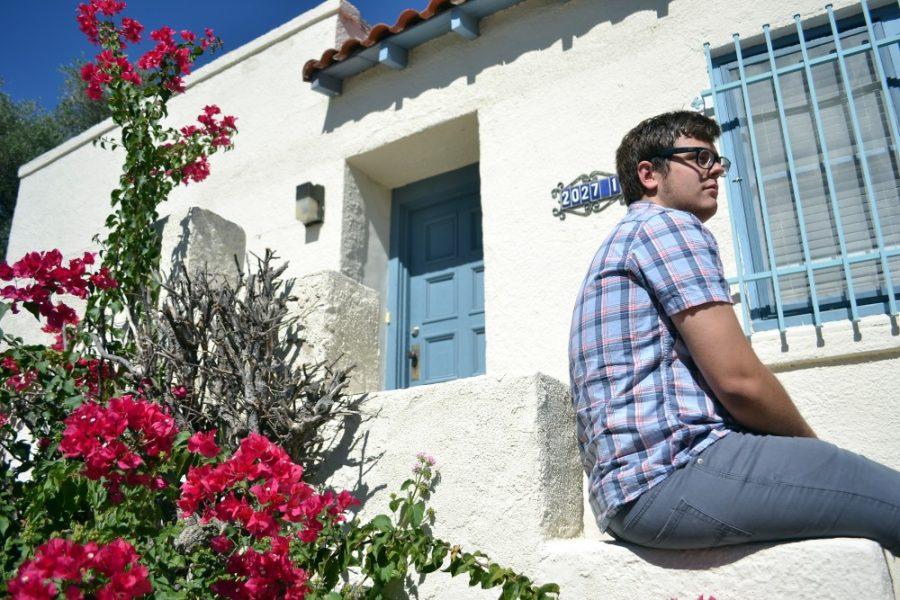The Sam Hughes neighborhood could soon be home to 18 new “mini-dorms.”
The City of Tucson is reviewing plans for The Retreat in Sam Hughes, which will replace a historic Christian Scientist church off of Fifth Street and Country Club Road. Now some residents of the neighborhood, which begins about a block east of the university, are concerned about what development company QuatroVest Inc. will do with the more than 2-acre lot.
Plans include subdividing the land into nine parcels, each more than 10,000 square feet, according to Ernie Duarte, director of the planning and development services department for the City of Tucson. The size of each parcel would allow for two structures under the R-1 zoning code for a total of 18, he said.
The structures have been presented as single-family residences, Duarte said. But some residents are calling out the buildings as mini-dorms, or multiple-bedroom houses marketed to students, that will increase the density of Sam Hughes.
Residents and developers in Feldman’s Neighborhood and Jefferson Park neighborhood have already battled over such structures. QuatroVest Developer Michael Finkelstein did not respond to repeated requests for an interview.
“It’s not an anti-student spirit,” said Sheila Hoban, vice president of the Sam Hughes Neighborhood Association, about her opposition to mini-dorms. “It comes from a spirit of there being a logical way to keep a neighborhood a neighborhood.”
Sam Hughes already houses many students and is affected by university-related problems such as game-day parking, Hoban said. Development projects for students are not new to the neighborhood, but have never been executed on such a large scale, she said.
UA alumni who own houses in Sam Hughes have extended them for their children or built smaller houses in the backyard, Hoban said.
“That has two edges to it,” she said. “It increases density, but it can still be used by a single family.”
But QuatroVest’s development plans could complicate parking, increase noise levels and compromise safety, she said.
“It’s in the university’s interest to have stable family neighborhoods,” Hoban said. “When is the tipping point?”
The Retreat in Sam Hughes will replace a 1949 church built in the Spanish Colonial style, said Jonathan Mabry, historic preservation officer for the City of Tucson. The church could be eligible for listing on the National Register of Historic Places, but is not listed, he said.
The building has no protection against demolition. However, the developer must provide architectural documentation of the building before it’s torn down, Mabry said.
“There is at least a permanent record before it’s demolished,” he said.
For some residents who own property bordering the lot, the potential change of use is an unpleasant surprise.
“It’s a nightmare,” said Corey Reidy, who has lived in Sam Hughes since 2006.
Reidy is concerned about the development’s effect on parking, traffic and population density, he said. Having large groups of students living together could change the character of the neighborhood, he said.
“It’s supposed to be a quiet little neighborhood,” Reidy said. “But we have some renters who are red-tagged every weekend.”
Students such as Nick Going, a film and video production senior, like living close to other students. Going moved into a house in Sam Hughes this year. He lives in the second unit on a lot and shares a backyard.
“The community is mostly college kids and it’s so close to campus,” he said.
Going said he would have considered living in the new developments had they been available. He said he’s had mixed relationships with his neighbors, but college students living together do not inherently present problems.
“Some (residents) are more OK with where the neighborhood’s going,” Going said.
The City of Tucson is working on developing guidelines for the number of unrelated people who can live together, largely in reaction to the controversy over other mini-dorms. But whether these rules will affect the structures in Sam Hughes cannot be determined, Duarte said.
“It’s a little too early to say on this case,” Duarte said. “Maybe, or maybe not. It’s premature.”









